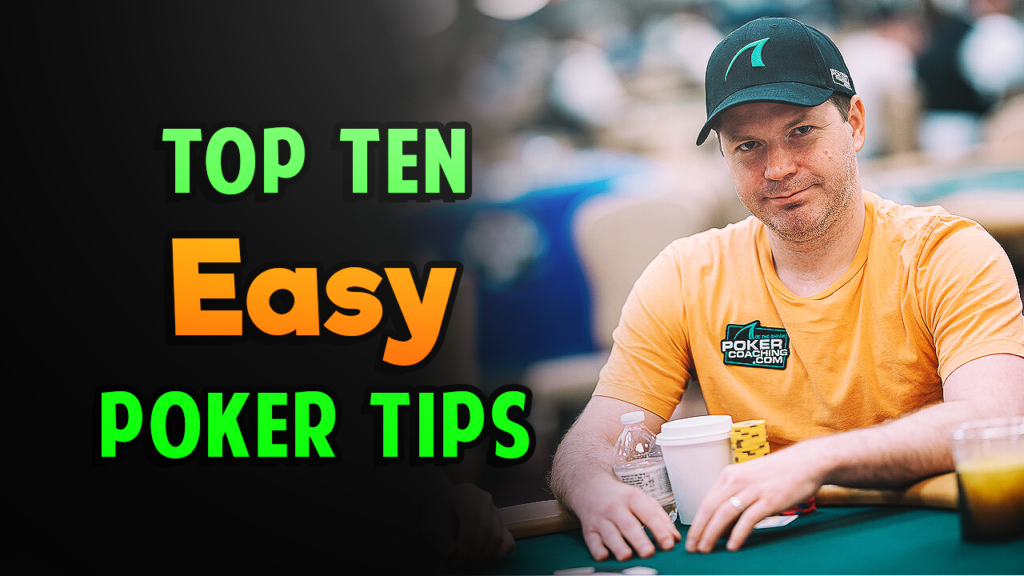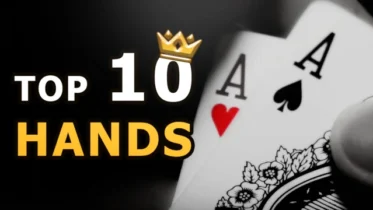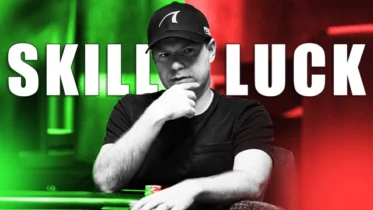I am often asked what are the strategies that pros use to build big stacks early on in tournaments. Many players believe that it is some secret strategy that pros use to build huge stacks in poker tournaments. First, variance is a big part of getting a big stack. Anyone that has doubled up early in a tournament has experienced huge positive variance. Second, the biggest thing pros do early in tournaments is capitalize on the mistakes of their opponents, not doing anything special themselves.
I want to start this article off by reiterating that there is really nothing extra that should be done to try to build a stack in a tournament. In most instances, you are at the mercy of variance in determining how your stack fluctuates throughout a tournament. There are a few strategic adjustments that can be made when playing deep stacked to increase your chances of a big stack.
Starting With Hand Selection
Hand selection is very important early on in a tournament. When playing 200+ big blinds deep, you need strong hand playability. You want to be playing hands that can make straights in flushes early, not top pair type hands. For example, the value of suited aces increases as stacks increase. Making the nut flush versus someone’s smaller flush is a great way to build a big stack early. Same with set over setting someone in a big pot. While there is positive variance in this, you can also help insure you are on the correct side of variance in your preflop selection. Often you will see people call a hand like 8-7 suited from any position versus any size of a bet.
For example, UTG opens 3x and you are UTG +1 with 8-7 suited. Calling here can lead you to be on the wrong side of a cooler. When calling, the pot is likely to go multi-way and this increases the chances that someone else comes in with suited cards that dominate yours. The opposite holds true, I may flat call with more suited ace hands because I want to let people into the pot with worse flush draws that I can dominate.
The same scenario from suited connectors can be applied to small pocket pairs. Hands like pocket twos through pocket sevens are often over valued by people. It is really difficult for a set of fives to set over set another pocket pair, more likely it gets set over set itself. Being careful with small pairs when playing super deep is a smart move, this is especially relevant in multi-way scenarios when there are often a couple people holding pairs trying to hit their set in the pot.

Crush poker tournaments and cash games with Jonathan Little’s Top Ten Poker Tips!
Utilizing Bluff Spots In Poker Tournaments
Another key part to early game strategy involves bluffing. Early on in a tournament, the pressure, or lack thereof, should lead to lower bluffing frequencies. In high pressure situations, such as deep in a tournament, bluffing is highly valuable because many players are more likely to make tight folds. When there is no pressure early in tournaments, the average player is much less likely to make a tight fold. Many players seem to have too much curiosity early in tournaments and fail to value their chips.
Starting with 30,000 chips may be one of the biggest advantages to pros because of the mental edge. At 100/100 blinds, weak players do not value chips and don’t see losing 5000 chips as a significant problem. Since tournament chips do not explicitly translate to dollar amount, recreational players mindfully make –EV plays due to lack of focus in fundamentals. In reality, every chip you lose is still losing you actual dollars. Deep in tournaments, that realization that chips = dollars returns because of the presence of the prize pool. Pressure returns to situations and tight folds return.
In general, your strategy should be capitalizing on the above as much as possible. Go for maximum value in all situations as weak players are unlikely to fold. Play the right type of hands that allow you to be on the right side of coolers. Finally, realize which players are capable of bluffing and which opponents are not. Follow these steps to help find yourself on the positive side of variance early on in tournaments.



